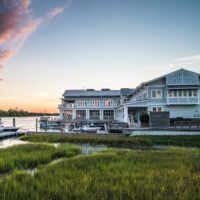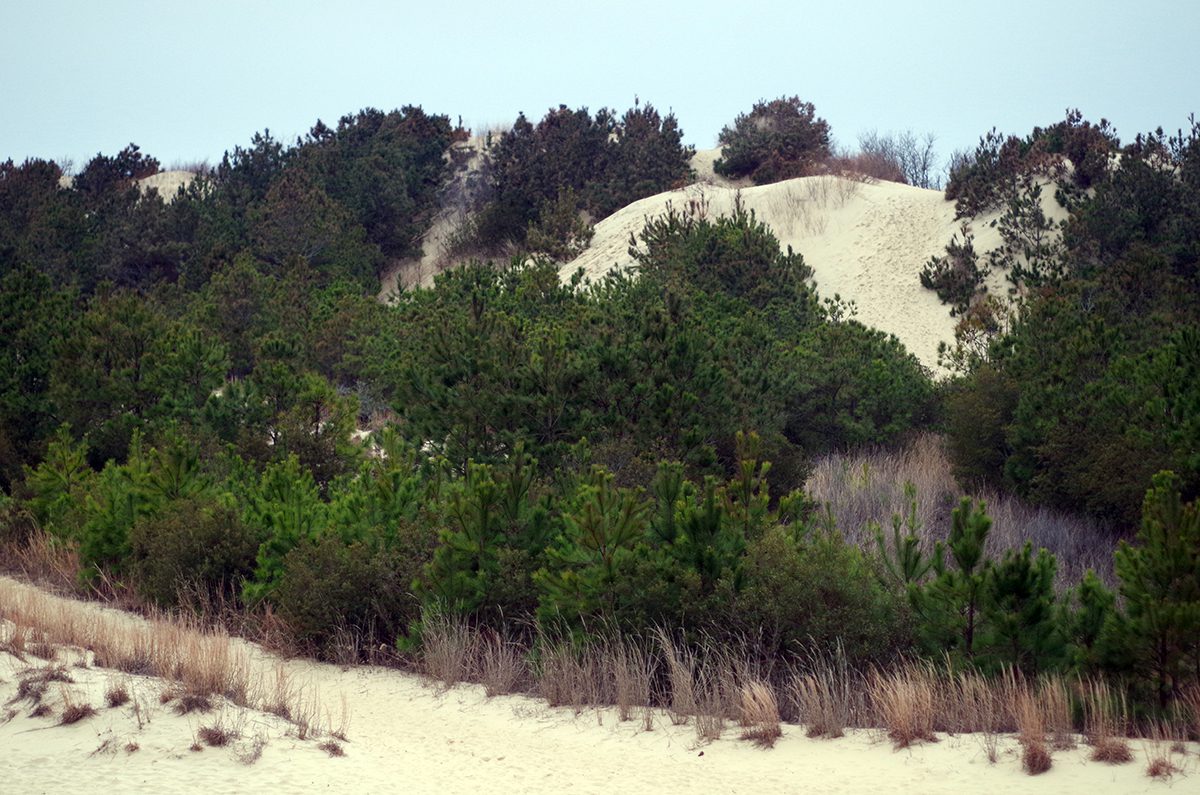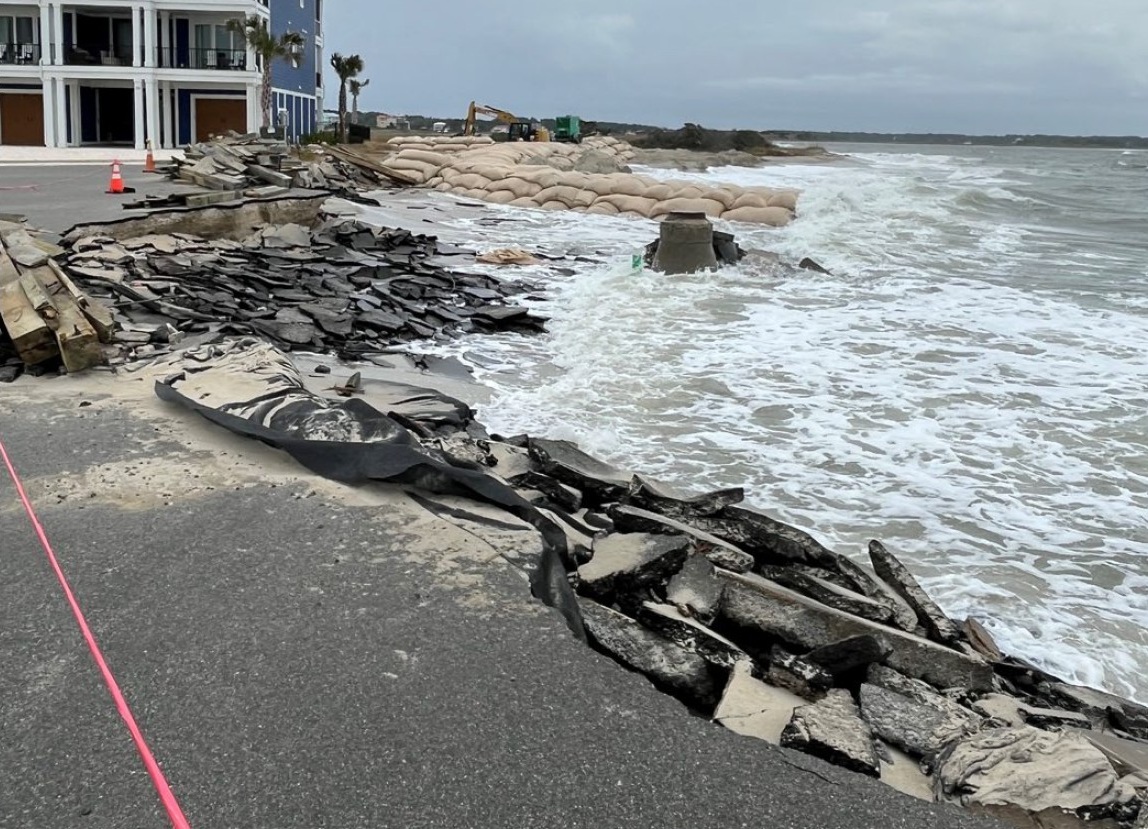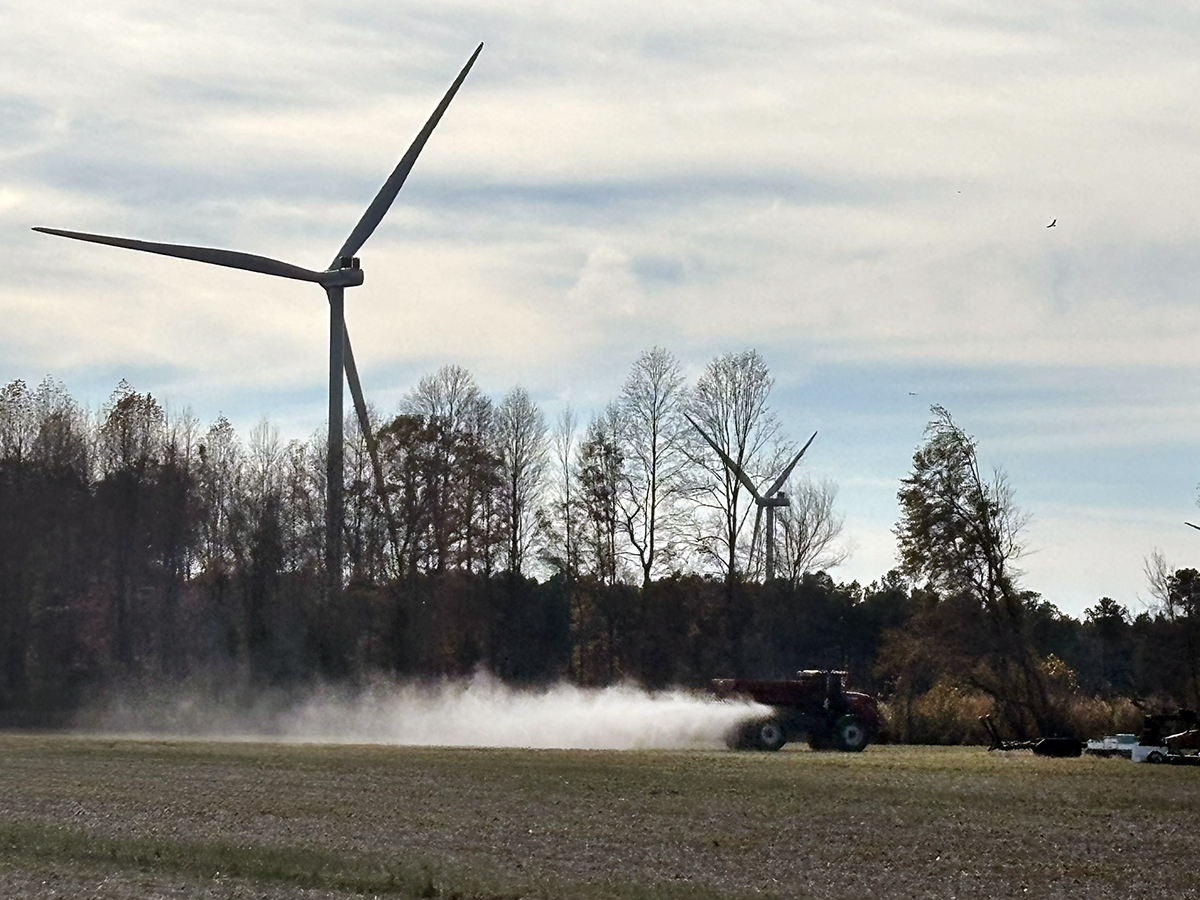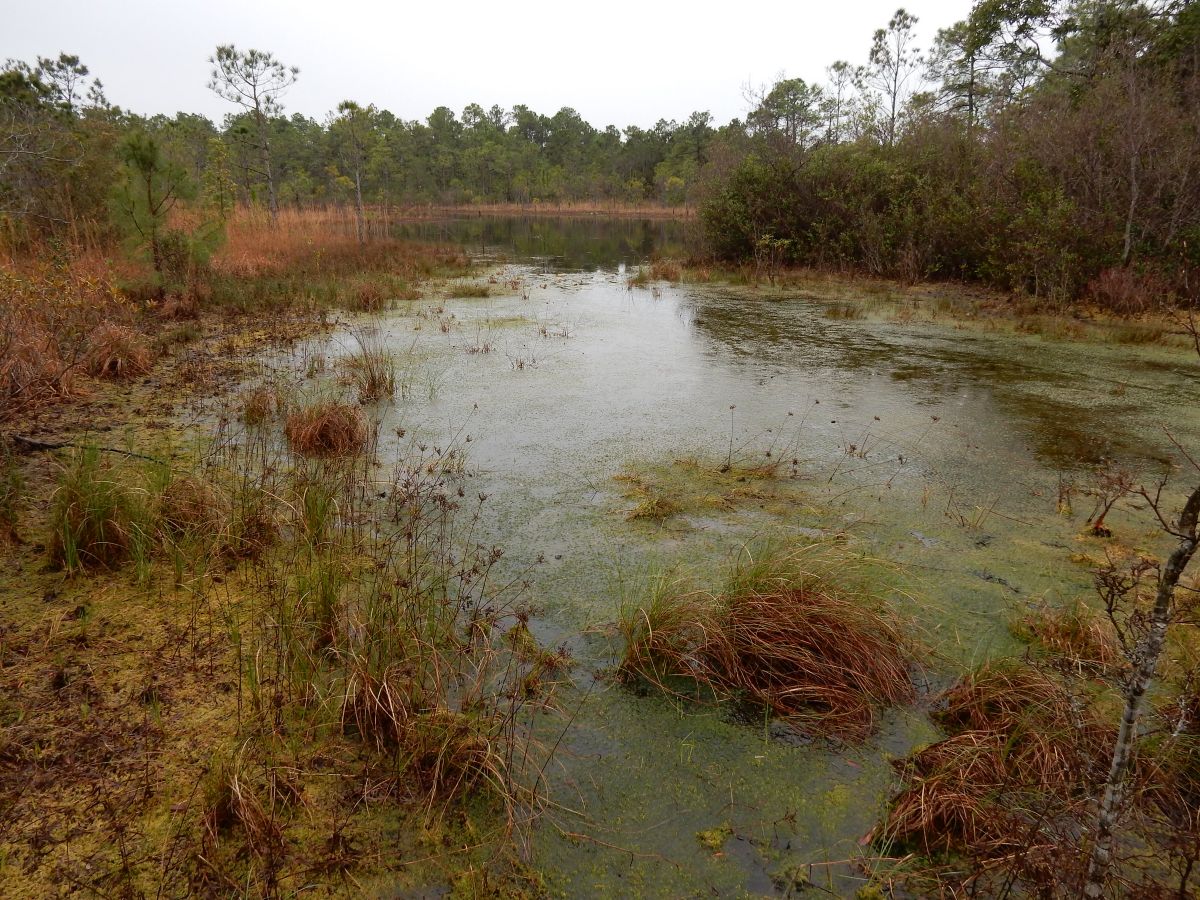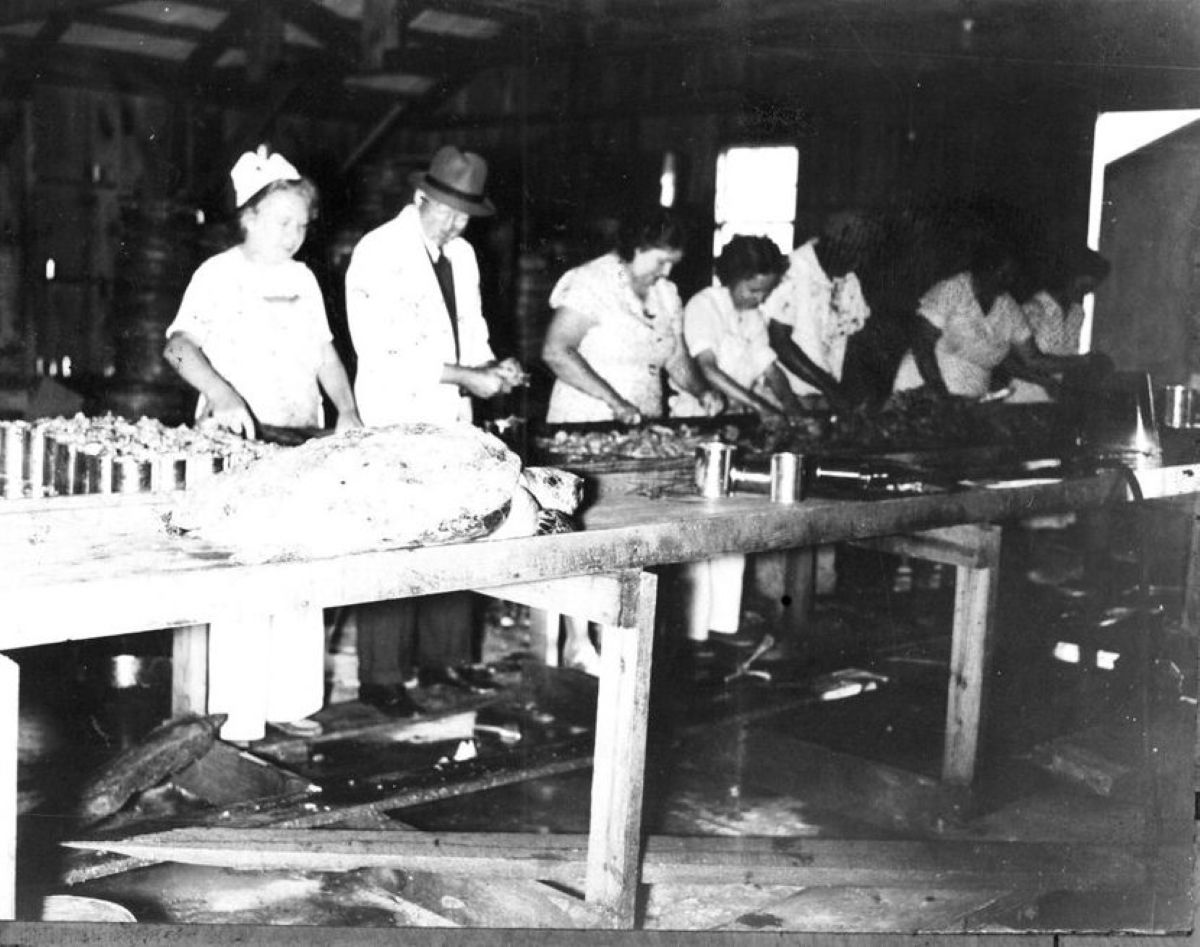
Editor’s note: Coastal Review regularly features the work of North Carolina historian David Cecelski, who writes about the history, culture and politics of the state’s coast. More of his work can be found on his personal website.
From Cecelski: This is the 26th photograph in my photo-essay “Working Lives”– looking at the stories behind the photographs in the N.C. Department of Conservation and Development Collection (1937-1953) at the State Archives in Raleigh.
In this photograph, we see workers slaughtering and canning sea turtles at a cannery in Marshallberg, N.C., September 1938.
Supporter Spotlight
According to a story in the Raleigh News & Observer that was published a year earlier, March 21, 1937, the cannery’s owner, Carroll Crocket, hailed from Crisfield, Maryland, one of the busiest fishing ports on the Chesapeake Bay.
In the 1890s, Crockett’s father, A.R. Crockett, was among a group of Crisfield oyster dealers that began coming south in search of new oystering grounds. He was drawn above all to Core Sound and particularly to the stretch of quiet bays and marshlands between Harkers Island and Smyrna.
In or about 1897, he established an oyster cannery at Marshallberg, a village located on that part of Core Sound.
The village sits on a a peninsula shaped by Core Sound, a lovely bay called Sleepy Creek, and a body of water called the Straits that runs between Marshallberg and Harkers Island.
In the late 1800s and early 1900s, Crisfield fishermen also played an important role in bringing the soft-shell crab industry to Marshallberg. In the late 1930s, when this photograph was taken, soft-shell crabbing was still a big business on Core Sound and Marshallberg was home to the state’s busiest soft-shell crab fishery.
A.R. Crockett’s oyster cannery does not seem to have lasted very long. However, following in his father’s footsteps, Carroll Crockett opened his cannery in Marshallberg in 1937.
Supporter Spotlight
At that time, Marshallberg was a threadbare but bustling little village. If you had visited that part of Down East in those days, you would have found a cluster of homes, a highly regarded boatyard, a crowd of fish houses, a crab-packing plant, two or three general stores, a pair of churches, and a school.
In the 1930s, Marshallberg was also an important shipping point for local truck crops, especially sweet potatoes.
A generation earlier, the village had also been the site of an important preparatory school called Graham Academy. Launched by northern missionaries after the Civil War, the Star of Bethlehem Church, most often just called the “Star Church” by locals, got its early support from women associated with the Methodist Missionary Society of Boston in 1874.
Founded 12 years later, in 1888, the academy was renown for providing a classical education to the children of oystermen and fisherwomen, as well as to the well-heeled from many other parts of eastern North Carolina, and for turning out some of the the region’s finest teachers.
The academy also had a lasting impact on Marshallberg. Again and again, old-time Marshallbergers have told me how the school’s teachers, the influx of students from other parts of eastern North Carolina, and the cultural events held at the school shaped them and gave the village a somewhat different air than other villages Down East.
Though Marshallberg remained a busy fishing port in the 1930s, the Great Depression was still hard in the village, as it was on all of Down East. For many people, soul-cripplingly hard.
To learn more about Marshallberg’s history, be sure to visit the Core Sound Waterfowl Museum and Heritage Center on Harkers Island. The museum’s webpage also includes a special section on Marshallberg’s history.
In addition, in 1938 many local people were still just getting their feet back on the ground after the great 1933 hurricane.
The ’33 storm had laid waste to much of Marshallberg. According to news reports, the hurricane washed away docks, fish houses, and boats by the score and destroyed or seriously damaged some 30 homes.
When the cannery opened in 1937, Carroll Crockett announced that he expected to employ some 150 seasonal workers. Given the hard times, the Marshallbergers must have welcomed the cannery’s arrival.
In addition to the cannery in Marshallberg, Carroll Crockett established at least half-a-dozen other canneries on the North Carolina coast in the 1930s and ’40s: a shrimp cannery in Wilmington, oyster canneries in Beaufort and Washington, and canneries focused more on tomatoes and other truck produce in Kinston, New Bern and Windsor.
* * *
According to the News & Observer, the Marshallberg cannery’s workers canned tomatoes in the summertime.
Then, in the fall and winter, they shucked and canned oysters and clams.
Shucking clams and oysters was cold, wet work, hard on the body and not infrequently debilitating. Many a time, when I was younger and more of them were still with us, the men and women who used to do that kind of work in Down East canneries told me how it made them feel old before their time.
On the other hand, Marshallberg’s people were no strangers to hard work, and times were hard. Few turned down a job because it wasn’t easy, if only because there were no easy jobs to be had.
Evidently, when they had neither clams nor oysters, nor tomatoes or other truck crops, they at least occasionally turned to canning sea turtles.
* * *
I am not aware of any cannery on the North Carolina coast that focused primarily on sea turtles.
In the late 19th century, such canneries did exist for a short time in the Florida Keys and in a few places on the Gulf of Mexico, where the most desirable of sea turtles for making turtle soup — green turtles, (Chelonia mydas) — were far more abundant than on the North Carolina coast.
Those canneries in Key West and the Gulf Coast did not last long. Even by the 1890s, the mass killing of sea turtles, as well as the harvesting of their eggs, had driven them close to extinction in many parts of the Florida and Texas coast.
As early as 1900, the sea turtle fisheries in Florida and other parts of the Gulf Coast had, with one or two exceptions, shut down. From that time on, the harvesting of sea turtles was done almost exclusively for local consumption or when sea turtles were caught as “by-catch” by fishermen engaged in other fisheries.
The highly prized green turtles were also found in North Carolina’s coastal waters, but far less frequently than in more tropical seas.
Loggerhead turtles (Caretta caretta) were far more common on the North Carolina coast.
Though their meat was darker, oilier, and considered less desirable than that of green turtles, loggerheads were still sold to be used in turtle soup. I can’t be sure, but I assume that loggerheads made up the bulk of the sea turtles caught on the Outer Banks and other parts of the North Carolina coast.
The luxury market for turtle soup was always the driving force behind the sea turtle fishery in the United States. However, the oil of sea turtles was also put to use at least occasionally. According to an article called “The Origin, Evolution, and Demise of the U.S. Sea Turtle Fisheries” that appeared in NOAA’s Marine Fisheries Review in 1994, the oil of loggerhead turtles was sometimes sold as a leather softener and fishermen in some places coated the bottom of their boats with loggerhead oil in order to discourage worm damage.
Compared to Florida or the Caribbean, a far smaller fishery for sea turtles had existed on the North Carolina coast since at least the 1880s.
In 1885, for instance, according to the June 9, 1885, issue of New Bern’s Daily Journal, a man identified as “Mr. K. Willis” was “the champion turtle hunter” on the waters around Swansboro.
The newspaper reported that Mr. Willis used a 20- or 30-yard-long, wide-meshed net to capture 29 “large sea turtle” over a two-day period.
More than likely, he was the kind of man that did a little bit of everything around the water, a “progger,” they would have called him on some parts of the North Carolina coast.
However, on most parts of the North Carolina coast, a fisherman or woman might make a turtle stew now and then, but they were unlikely to make much profit from catching them.
* * *
That could be seen on Hatteras Island in 1901. According to a visitor to the island that winter, the keeper at the Cape Hatteras Lighthouse spied a dozen sea turtles just offshore a couple weeks before Christmas.
Writing in the Baltimore Sun March 31, 1902, the visitor recalled that the lighthouse keeper used some kind of meat as bait to catch three of the turtles with a hook and line.
The Sun’s correspondent asked the lighthouse keeper what he had done with the sea turtles.
According to the article, “he replied that there was no market there, and the lighthouse crowd didn’t eat turtles, so he sent them as a present to the Cape station of life savers, where they were acceptable.”
I think that was quite typical on the Outer Banks, where, to my knowledge, there were never any canneries that handled sea turtles.
Of course at that time, there were also no restaurants on Hatteras Island that might have been interested in putting turtle soup on their menu. There were no restaurants at all on the island. For that matter, no bridges to the island had yet been built and no roads on the island had yet been paved.
Now and then, an Outer Banks waterman might stow a live sea turtle in a shipment of salt mullet or shad and make a few dollars if it found a buyer at the docks in Norfolk or New Bern or Elizabeth City.
But overall, at least on the Outer Banks, sea turtles were generally one of the sea’s creatures that the islanders kept for themselves and, even then, partook of only every once and awhile.
* * *
On the Outer Banks, that did not seem to change later in the 20th century. On April 7, 1929, for instance, a correspondent of the News & Observer reported that Ocracoke Island fishermen had recently captured “dozens of sea turtles weighing from 200 to 500 pounds.”
The turtles, he said, were bound either for local kitchens or cast back into the sea.
“Here the natives bring the turtles ashore and make soup or hash from them, or if they are not in a turtle eating notion they throw them overboard as there is hardly any market for this species of turtle.”
There were canneries just to the south, though.
Even in the late 1800s, canneries operated in North Carolina’s larger coastal towns, including Morehead City and Beaufort, but now and then also in some of the more remote fishing villages along Core Sound.
For a few years, for instance, a Long Island, New York, company operated a clam cannery in Atlantic, called Hunting Quarters then. Smyrna was home to an oyster cannery, and there was even a cannery or two at Diamond City, out on the island called Shackleford Banks, prior to all the villagers leaving the island in the late 19th and early 20th century.
How often, if at all, those canneries handled sea turtles, I do not know. Their real business was elsewhere — in oysters, above all — but perhaps like the cannery in Marshallberg, they may sometimes have slaughtered and canned sea turtles on a small scale when the turtles were available and the cannery workers did not have anything more profitable to do.
As was always the case with catching and butchering the sea’s larger creatures — whales, dolphins, sharks — sea turtle canning was a grim business.
A casual visitor with a weak stomach or a soft spot for the welfare of wild animals was bound to be alarmed by a visit to any of those enterprises.
In September 1938, the same month this photograph was taken, such an individual did visit the cannery in Marshallberg.
That individual’s name was Edward Peyton “Ted” Harris, and he was a playwright and theater actor originally from Greenville.
I do not know how Harris came to be in Marshallberg. Judging from the timing of a letter that he wrote to the Raleigh News & Observer, he and the photographer who took this photograph very likely visited the cannery together.
I only know about Ted Harris’s tour of the cannery because the News & Observer published his letter. In that letter, he expressed outrage over the treatment of the sea turtles at the Marshallberg cannery.
He had seen the holding pen in which the sea turtles were kept until it was time to slaughter them. That was standard practice: sea turtle canneries typically kept captured turtles alive until the workers had enough to make it worth their while to slaughter and can them. In some cases, that was days, but in other cases they were held in captivity for weeks or months.
Of the turtles’ living conditions at the cannery, Ted Harris wrote:
“Yesterday… an attendant showed us a dozen sea-turtles penned up for slaughter. Boxes hedged them about on a dry concrete floor. There was no provision for feeding them or giving them the water they need worse than food. One had already died. The workman assured us … that this one would not become the main ingredient for some unsuspecting purchaser’s soup. However, those that remained alive could not be in good condition when the ax ends their suffering.”
In his letter, Harris indicated that he wanted to bring the sea turtles’ living conditions to the attention of the Society for the Prevention of Cruelty to Animals, as well as to the local health department.
He also noted, by way of a coda, that the worker that was his tour guide at the cannery had told him, on the side, that “he himself would never eat canned turtle, having watched the canning.”
* * *
The Status of Sea Turtles Today
In a 1994 article titled “The Origin, Evolution, and Demise of the U.S. Sea Turtle Fisheries,” a NOAA marine scientist named W. N. Witzell wrote:
“Commercial fisheries, habitat destruction, and pollution has had a devastating impact on both U.S. and world sea turtle populations. The U.S. Endangered Species Act of 1973 and subsequent amendments has provided the legislation needed to prevent the extinction of these magnificent animals in the northwestern Atlantic Ocean [including the North Carolina coast].”
Today, with the aide of the N.C. Wildlife Commission’s NC Sea Turtle Project, more than 20 different community groups are monitoring sea turtle nesting and stranding activities on the North Carolina coast. (You can find a list here.)
At the same time, state and federal agencies are increasingly working hand-in-hand with the commercial fishing industry to protect sea turtles from being accidentally caught in fishing nets.
Through their efforts, sea turtle populations have begun making a significant comeback in recent decades.
Much progress has been accomplished in the last half century. However, recent political developments in the U.S. have put into doubt the future of sea turtles and all other endangered species that rely on the protections of the Endangered Species Act, the vitality of the Environmental Protection Agency, and/or the ongoing research work of the National Oceanographic and Atmospheric Administration, all of which have played key roles in the preservation of sea turtles here in the U.S. and around the world.

